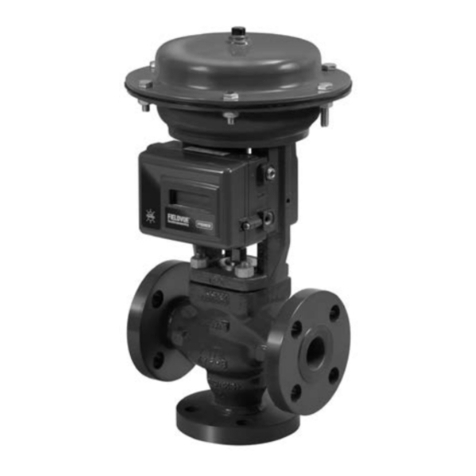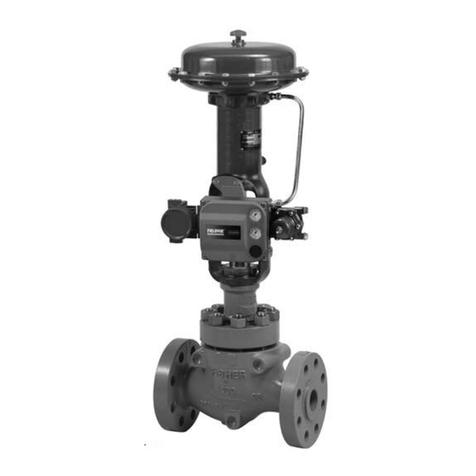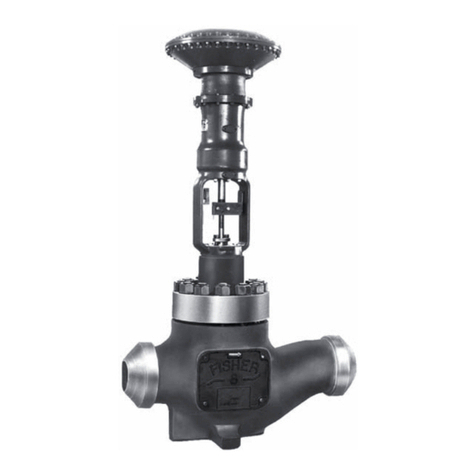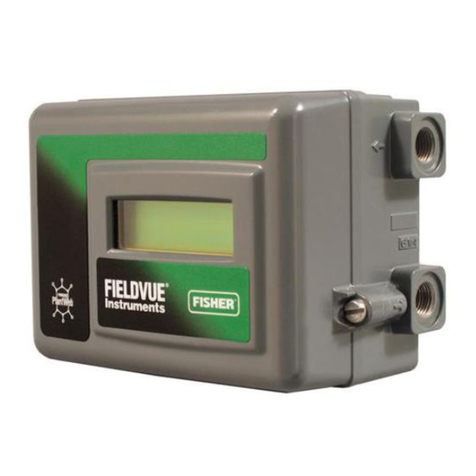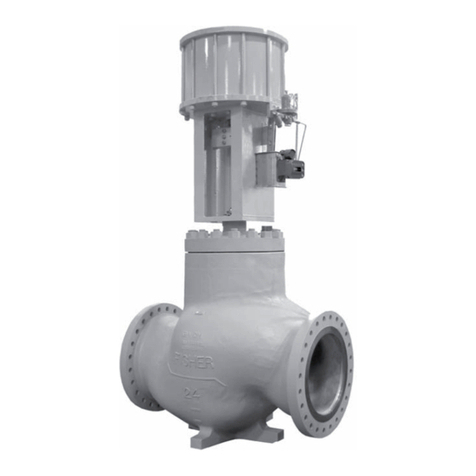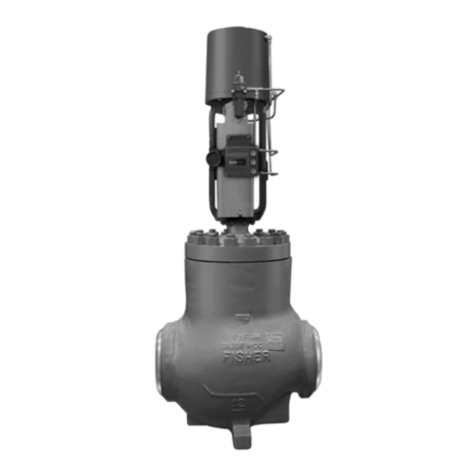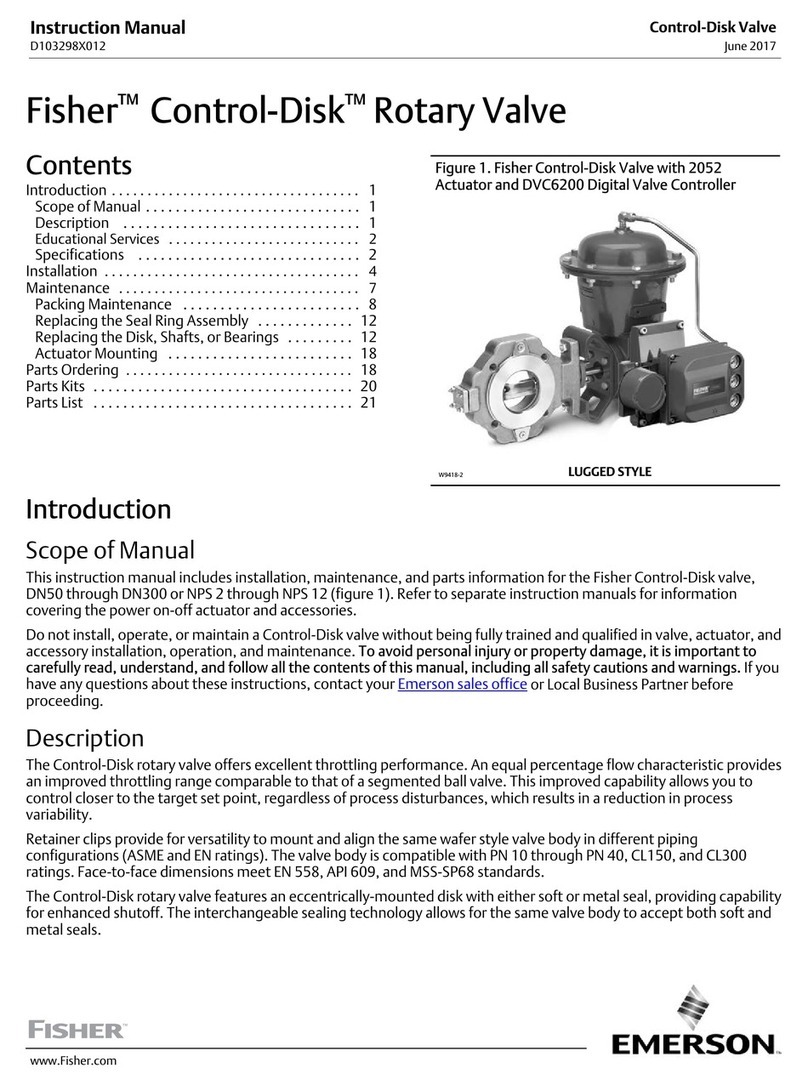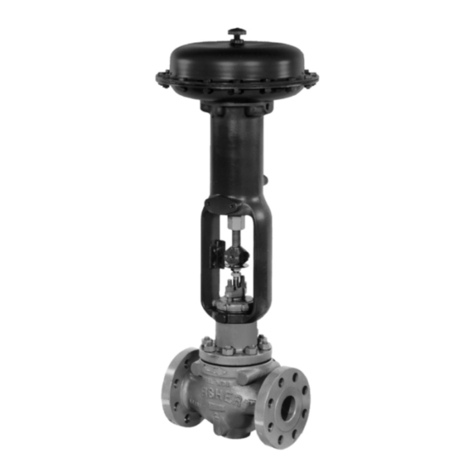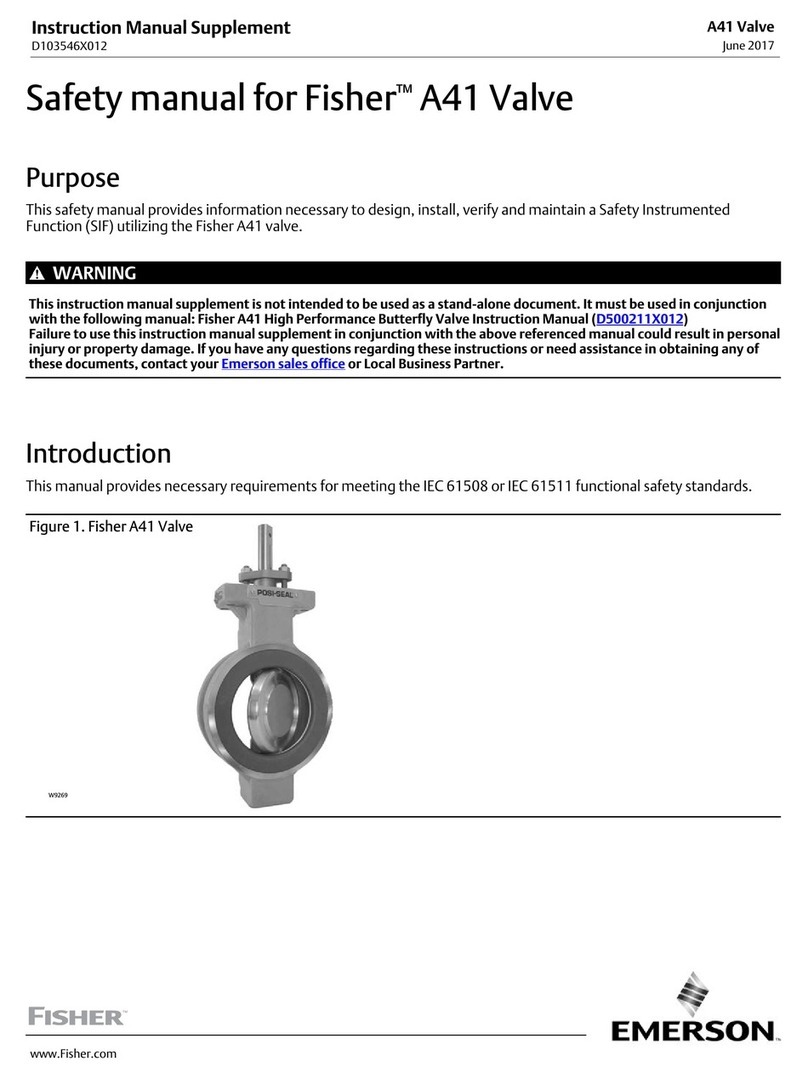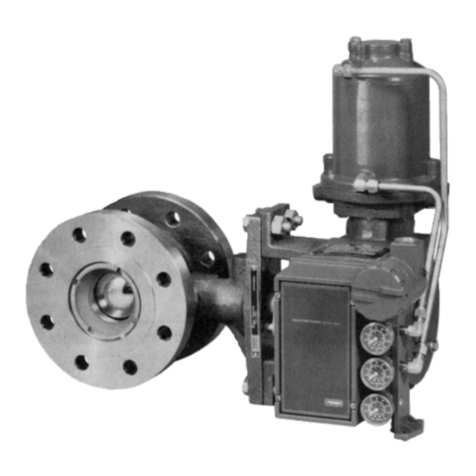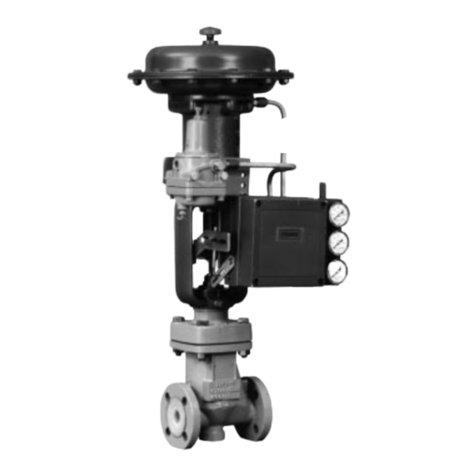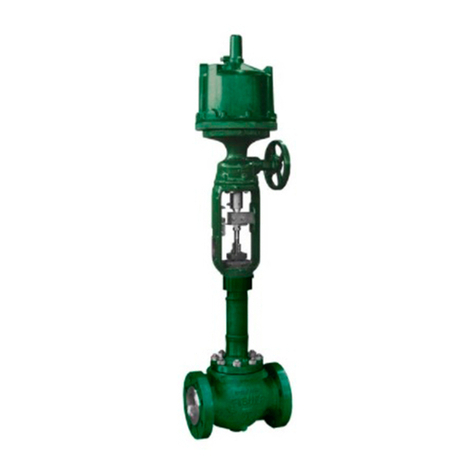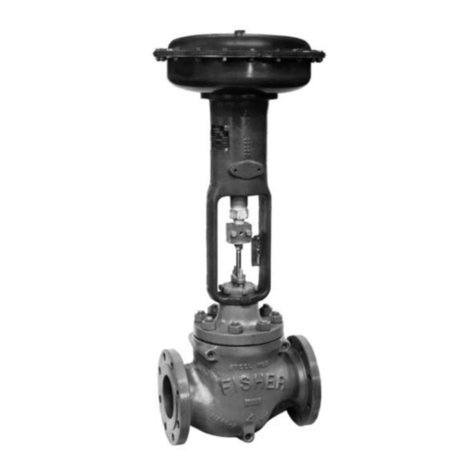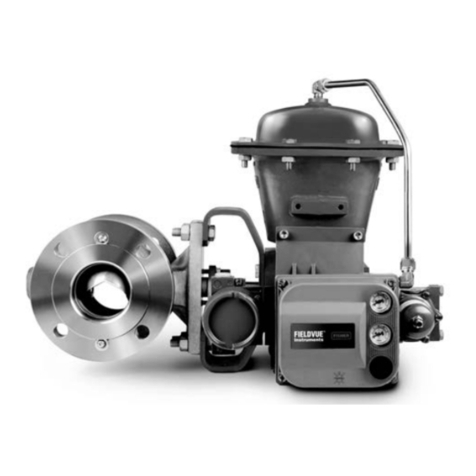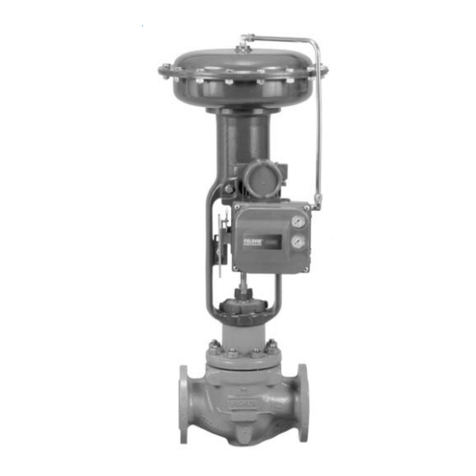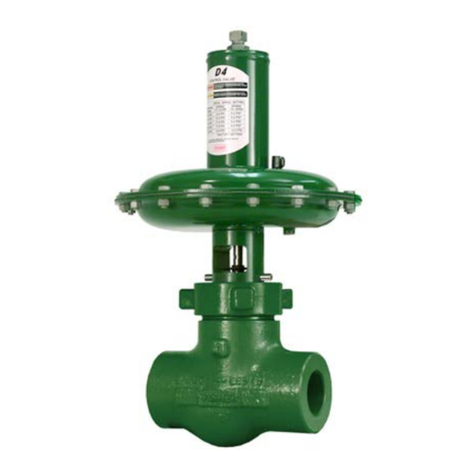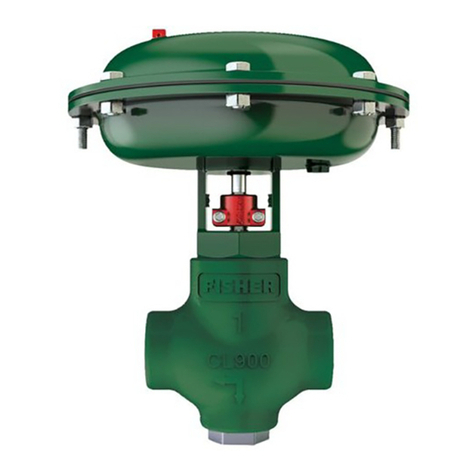
Design CAV4
7
Packing Replacement
Before performing any maintenance of the valve or
packing: Isolate the control valve from the line pres-
sure, release pressure from both sides of the valve
body, and drain the process media from both sides of
the valve. If using a power actuator, also shut-off all
pressure lines to the power actuator, release all pres-
sure from the actuator. Use lock-out procedures to be
sure that the above measures stay in effect while you
work on the equipment.
For spring-loaded PTFE V-ring packing (shown in fig-
ure 5), tighten the packing flange nuts (key 15) until
the shoulder on the packing follower (key 22, figure 5)
contacts the bonnet (key 12). If packing leakage still
exists, replace the packing according to the numbered
steps below.
If packing leakage exists with PTFE-composition or
graphite ribbon/filament packing, first try to limit the
leakage and establish a stem seal by tightening the
packing flange nuts (key 15) to at least the minimum
recommended torque in table 5. However, do not ex-
ceed the maximum recommended torque in table 5, or
excessive friction may result.
If the packing is relatively new and tight on the stem,
and if tightening the packing flange nuts does not stop
the leakage, the valve stem may be worn or nicked so
that a seal cannot be made. The surface finish of a
new valve stem is 0.1 micro-meter (4 micro-inches)
rms. If the leakage comes from the outside diameter of
the packing, the leakage may be caused by nicks or
scratches around the packing box wall. While replac-
ing the packing according to the numbered steps be-
low, inspect the valve stem and packing box wall for
nicks or scratches. If the nicks or scratches cannot be
removed by refinishing, replace the parts with new
parts.
1. Remove the cap screws in the valve/actuator stem
connector (not shown), and separate the two halves of
the stem connector. Then exhaust all actuator pres-
sure, if any was applied, and disconnect the actuator
supply and any leakoff piping.
2. Unscrew the hex nuts (key 26) or the yoke locknut
(not shown), and lift the actuator from the bonnet (key
12).
3. Loosen the packing flange nuts (key 15) so that the
packing (key 19 or keys 29 and 13, figure 5) is not tight
on the valve stem (key 4). Remove any travel indicator
disc and stem locknuts from the valve stem threads.
CAUTION
When lifting the bonnet (key 12), be sure
that the valve plug and stem assembly
(key 4) remains on the seat. This will
avoid damage to the seating surfaces as
a result of the assembly dropping from
the bonnet after being lifted part way
out. The bonnet is easier to handle sepa-
rately.
4. Unscrew the large hex nuts (key 27) that secure the
bonnet (key 12) to the valve body. Carefully lift the
bonnet off the valve stem. If the valve plug and stem
assembly (key 4) starts to lift with the bonnet, tap the
end of the stem down with a brass or similar hammer
that will not deform the valve stem threads. Set the
bonnet on a cardboard or wooden surface to prevent
damage to the bonnet gasket surface.
5. Remove the upper bonnet gasket (key 6).
6. Cover the opening in the valve body to protect the
gasket surface and to prevent foreign material from
falling into the valve body cavity.
7. Remove the packing flange nuts (key 15), packing
flange (key 16), upper wiper (key 21, figures 5 and 10,
not used with graphite ribbon/filament packing), and
packing follower (key 22). Carefully push out all the
remaining packing parts from the valve side of the
bonnet using a rounded rod or other tool that will not
scratch the packing box wall.
8. Clean the packing box and these metal packing
parts: packing follower (key 22), packing box ring (key
20), spring and special washer (keys 23 and 24, used
with PTFE V-ring packing, figure 5) or lantern ring (key
23, used with other packing as shown in the figure 5
arrangements).
9. Inspect the valve stem threads for any sharp edges
that might cut the packing. A whetstone or emery cloth
may be used to smooth the threads if necessary.
10. Remove the protective covering from the valve
body cavity, and install a new upper bonnet gasket
(key 6). Then slide the bonnet (key 12) over the stem
and onto the stud bolts (key 28).
11. Lubricate the stud bolt (key 28) threads and the
faces of the hex nuts (key 27) with lubricant (key 18 or
equivalent)(not necessary if new factory prelubricated
hex nuts are used). Replace the washers and hex
nuts, but do not tighten them. Torque the nuts in a
crisscross pattern to no more than 1/4 of the nominal
torque value specified in table 6. When all nuts are
tightened to that torque value, increase the torque by
1/4 of the specified nominal torque and repeat the
crisscross pattern. Repeat this procedure until all nuts
are tightened to the specified nominal value. Apply the
final torque value again and, if any nut still turns, tight-
en every nut again.

